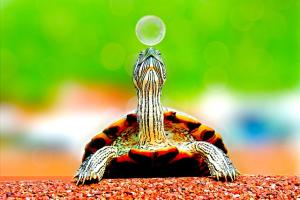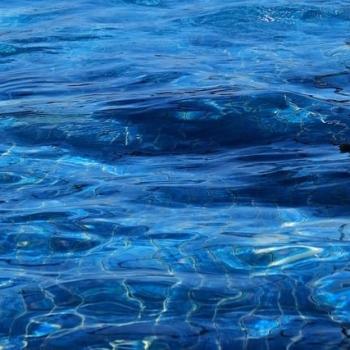
My friend told me that the worst thing she ever did, was take the chest plate off a turtle.
This happened a long time ago, when we were both teenagers in Columbus. She lived out in the country and I did not. She said she once found a box turtle sunning himself in the yard. She’d always wanted to know what the belly and chest of a turtle looked like underneath the shell. So she turned the unsuspecting creature onto his back, and somehow managed to pry off the bottom half of the shell. And the turtle died an agonizing death.
It turns out that a turtle can’t breathe without his chest plate. The plate is not only the bottom of the shell; it’s the sternum and ribs. Without the sternum and ribs he can’t draw a breath, and that’s the end. The top part of the shell is similarly important. The spinal column is in there. The shell of a turtle is a living thing, a part of the skeleton, covered in scales that are the same material as your fingernails. A turtle isn’t a reptile with a shell; a turtle is a living shell with organs inside. Remove the shell and you don’t get a naked turtle. You get turtle soup.
I’ve been pondering this story lately.
I’ve been thinking about Adrienne, and about applying Adrienne’s diagnosis to what I now realize about my own childhood.
Let’s say you were a box turtle who lived among more conventional reptiles. There were anoles and gila monsters and horned lizards all around you, but you were a box turtle. Being a box turtle is good. You can sun yourself on rocks and trick people into thinking you’re a rock. You can eat insects as a baby and grasses when you grow up. You can wander into the shallowest part of the pond and stick your nose up for air, which is charming. Butterflies can land on your shell. People can ask you impertinent questions about your competition with a hare and you take it in stride. Turtles are wonderful. But the other reptiles don’t want you to be a box turtle.
“You need to come out of your shell,” says your neighbor, the iguana, not understanding that you are your shell.
“You’d be a lot easier to teach if you stopped dragging that shell around,” says your aunt, the python, who is only trying to help.
“Of all the children I’ve ever had, you and your shell hurt me the most,” says your mother, the alligator, who worries about how you’ll manage on your own.
“I think the shell is the reason you’re so slow and clumsy,” says your Kindergarten teacher, a komodo dragon.
“How can you possibly be a reptile if you’re stuck in that shell?” says the naturalist who studies other types of reptile, and has decided that a reptile with a shell is an abnormality, and has dedicated her life to “helping” abnormal creatures be normal.
The shell, you are told, is an embarrassing disease. The shell keeps you from climbing trees like the iguana or coiling up like the python or gliding through shallow water using your tail as a rudder like the alligator. The shell is a sickness that has to be cured so you can be like them. And next thing you know, everyone’s ganging up, trying to help, tearing you apart as they try to help, and you can’t draw a breath. And they are angry with you for not drawing a breath. “How dare you not draw a breath? We freed you from your shell. You’re supposed to be able to breathe now that you’re like us. Why are you acting hurt? Why are you acting like you were abused? We went to all this trouble and now you’re worse off than ever. You’re an ungrateful waste of our time.”
If only they’d taught you how to be a box turtle.
If only they understood that a turtle isn’t a disease or a catastrophe or a heavy cross; it’s a different kind of reptile, with unique talents and challenges.
If only another box turtle had taken you aside and said, “You’ll never glide through water like your mother, because you don’t have your mother’s shape. You are a box turtle, and box turtles don’t swim, they wade. Some turtles swim like this, paddling this way, but you’re the kind of turtle who doesn’t swim and that’s all right as well. Here’s a way you can walk through the shallows more easily, which I learned to do when I was your age. This will help you do the things you need to do, with your uniquely shaped body instead of anybody else’s.”
If only a naturalist who likes and studies turtles had explained to you, “You’ll never coil yourself like the python or climb though trees like the iguana, but that doesn’t mean that you are helpless. You move gracefully and slowly across the grass, which is good, because that’s where your food supply is. You have a hard shell, which is good, because predators have a hard time bothering you. You are supposed to do what you’re doing. I’ll help you learn to do it in a way that doesn’t hurt.”
If only the first person who saw you sunning yourself on a rock hadn’t said “Stop looking like rocks!” but rather. “That’s a neat trick! What else can you do?”
If only we let turtles be turtles.
That’s what’s been on my mind lately.
Mary Pezzulo is the author of Meditations on the Way of the Cross, The Sorrows and Joys of Mary, and Stumbling into Grace: How We Meet God in Tiny Works of Mercy.













